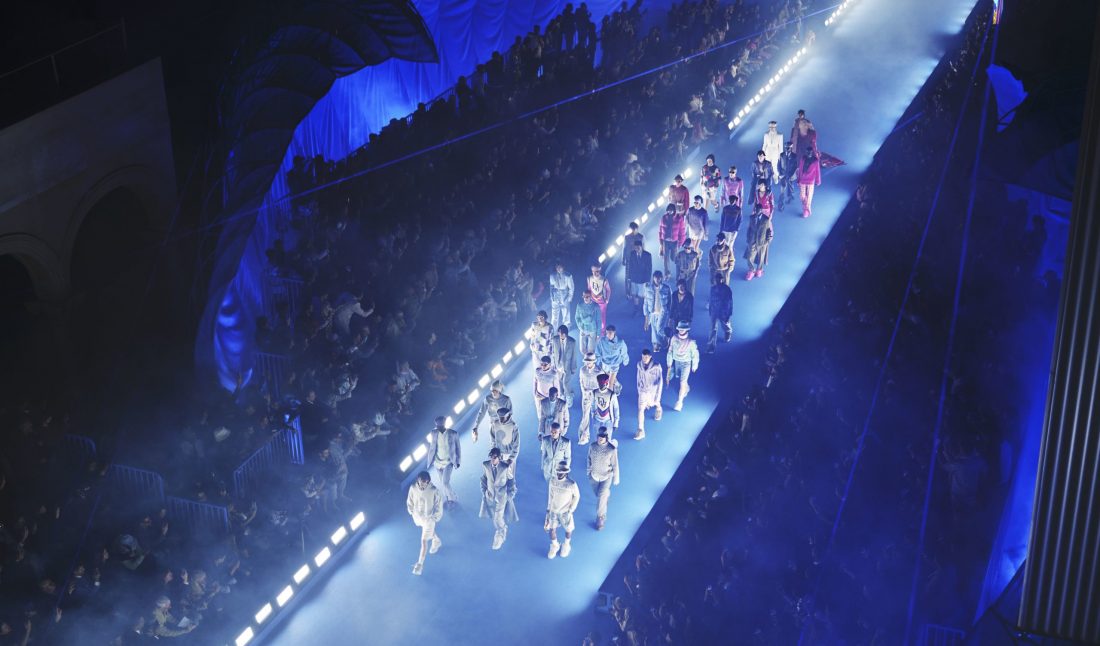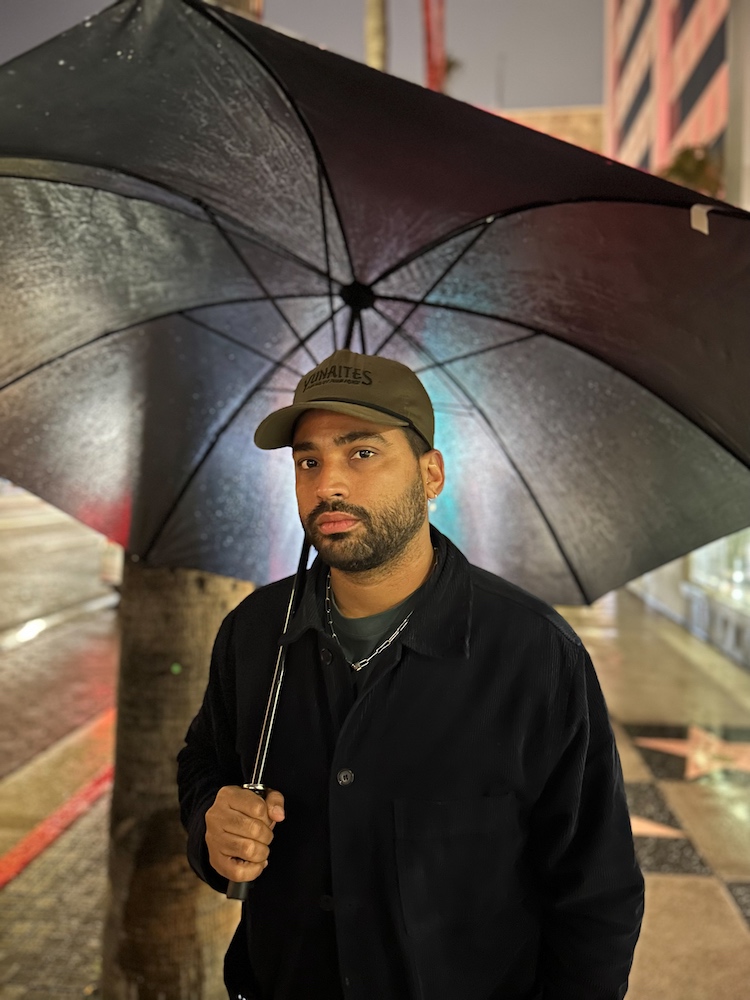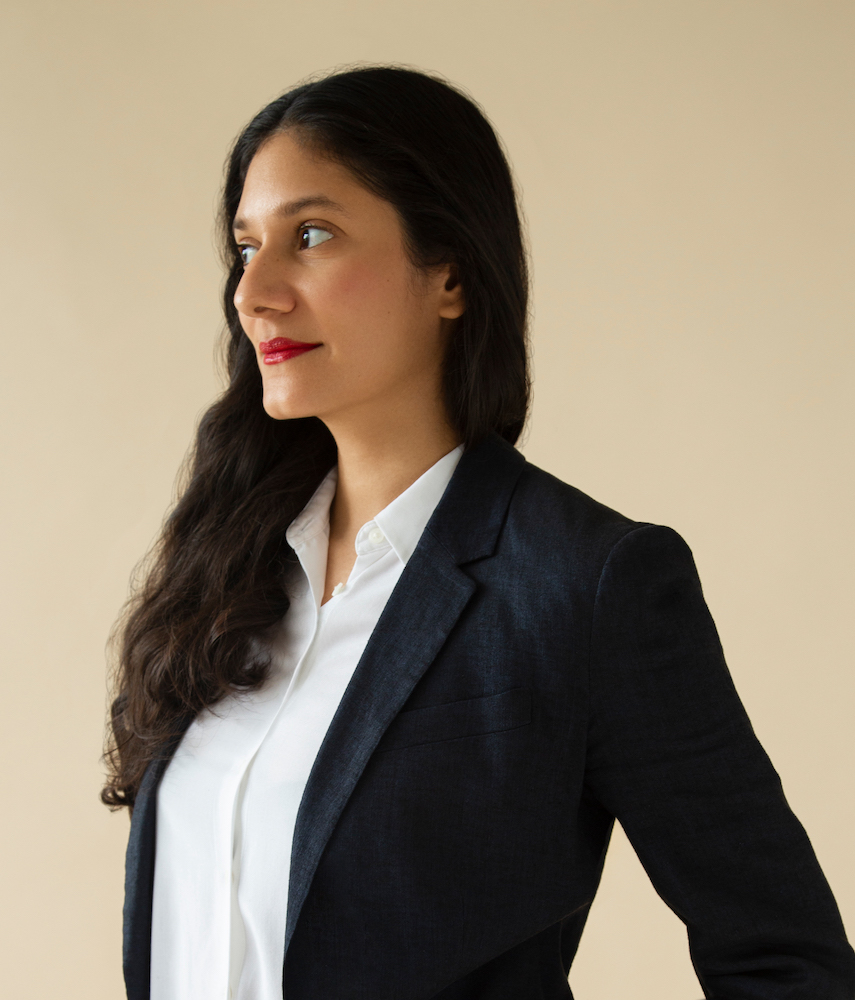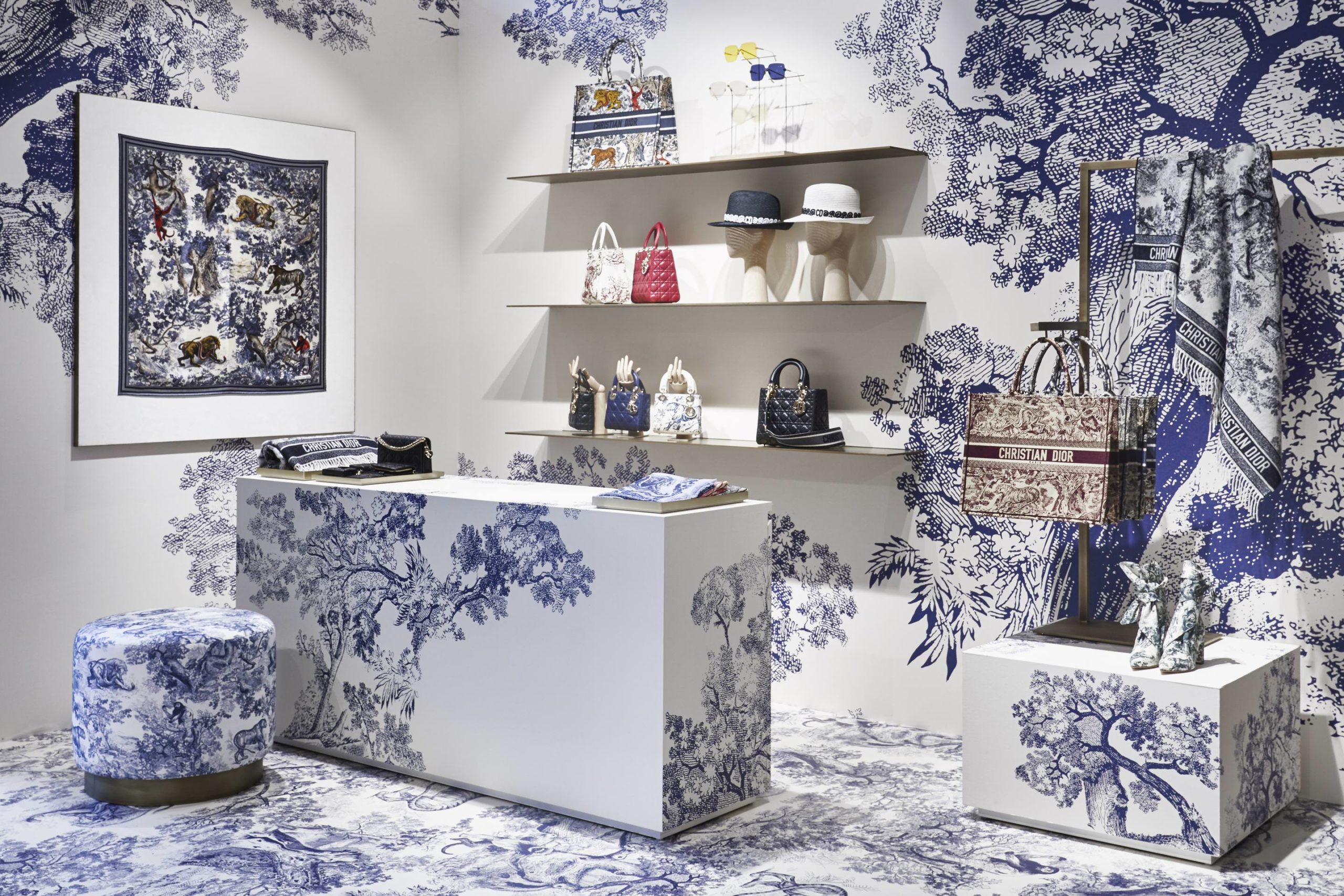Yesterday in Venice Beach, CA, maison Dior Men unveiled a special capsule collection for Spring 2023 designed through the gaze of ERL’s Eli Russell Linnetz. Venice Beach’s Winward Avenue (from where Linnetz Hails) offered a vibrant backdrop for a series of garments that saw an artful juxtaposition of Parisian elegance and Californian pop culture.
“We have worked with lots of different people on our collections, but this time I wanted to work with someone in a different way; I wanted somebody to see Dior from a different angle,” said Dior’s Menswear Artistic Director, Kim Jones. “With Eli Russell Linnetz, not only do I like his work but working with a younger designer on Dior men and seeing things from his perspective, felt incredibly inspiring. It was both familiar and revelatory; reaffirming why we both dreamed about working in fashion in the first place.”
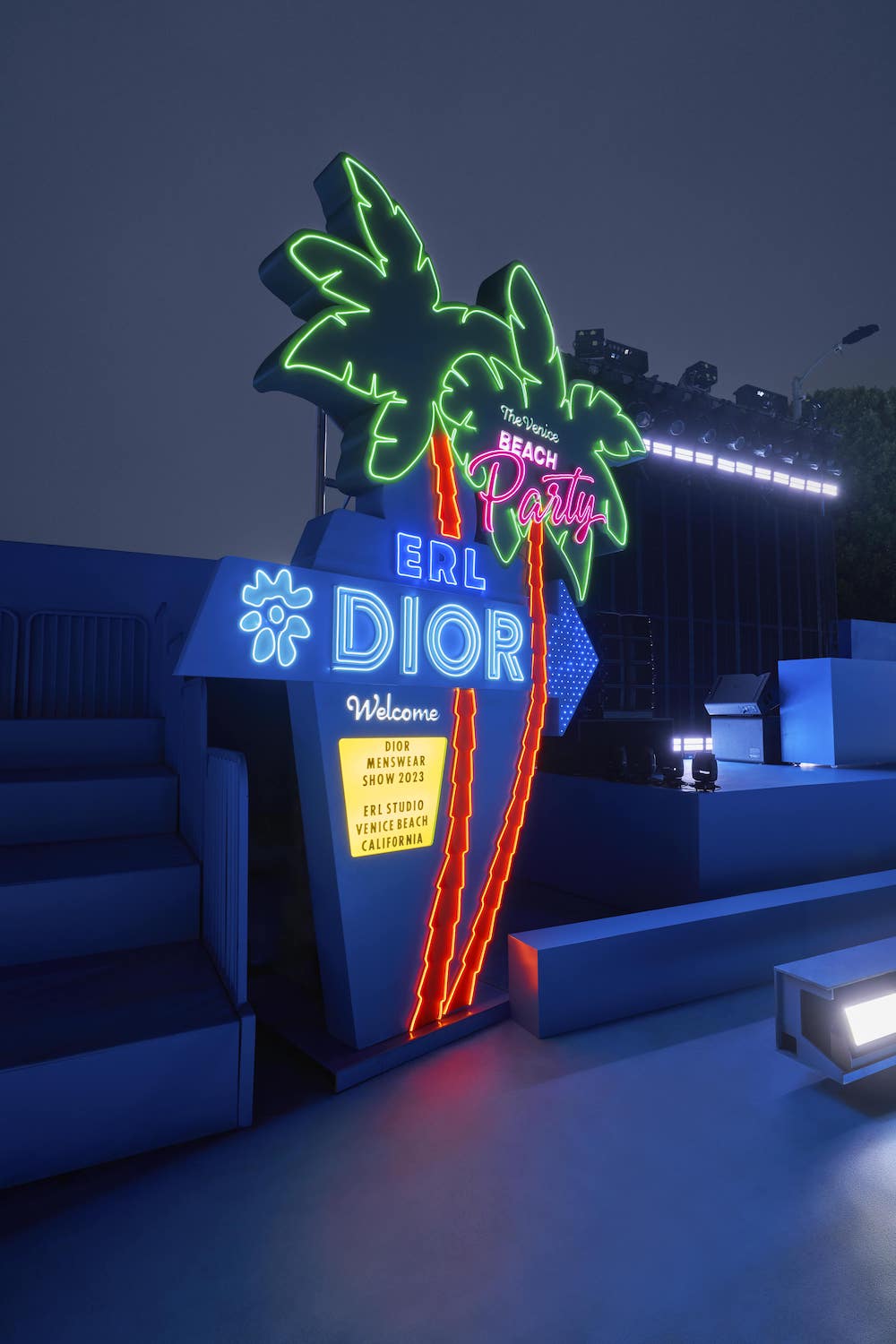 Dior Men Spring 2023, photo © Eric Staudenmaier, courtesy of Dior.
Dior Men Spring 2023, photo © Eric Staudenmaier, courtesy of Dior.
A soundtrack of My Bloody Valentine’s Only Shallow set the mood for looks that were at once fresh and nostalgic, while a cerulean runway and bleacher-style seating engulfed by a swell of waves set the scene. As the iconic glittering letters spelling out “Venice” framed the beachside venue, we saw an evolving gradient of tones walking the runway. First were designs in fresh, airy silvery whites, and soft hues that made us think of the ocean. Then came springy pinks and statement reds and purples, the evolving palette carrying looks that represented the crossover of two worlds.
“We started looking at the Dior archive from the year of my birth, 1991. This was during Gianfranco Ferré’s period as Artistic Director and was a part of the history of Dior that felt completely fresh for both Kim and me,” said Linnetz. “The Idea of ‘maximalism’ comes from there and from me—a coming together of chaos and perfectionism. There’s a collision of moments in time and history throughout the collection, of cross-generational and spatial meetings in time.”
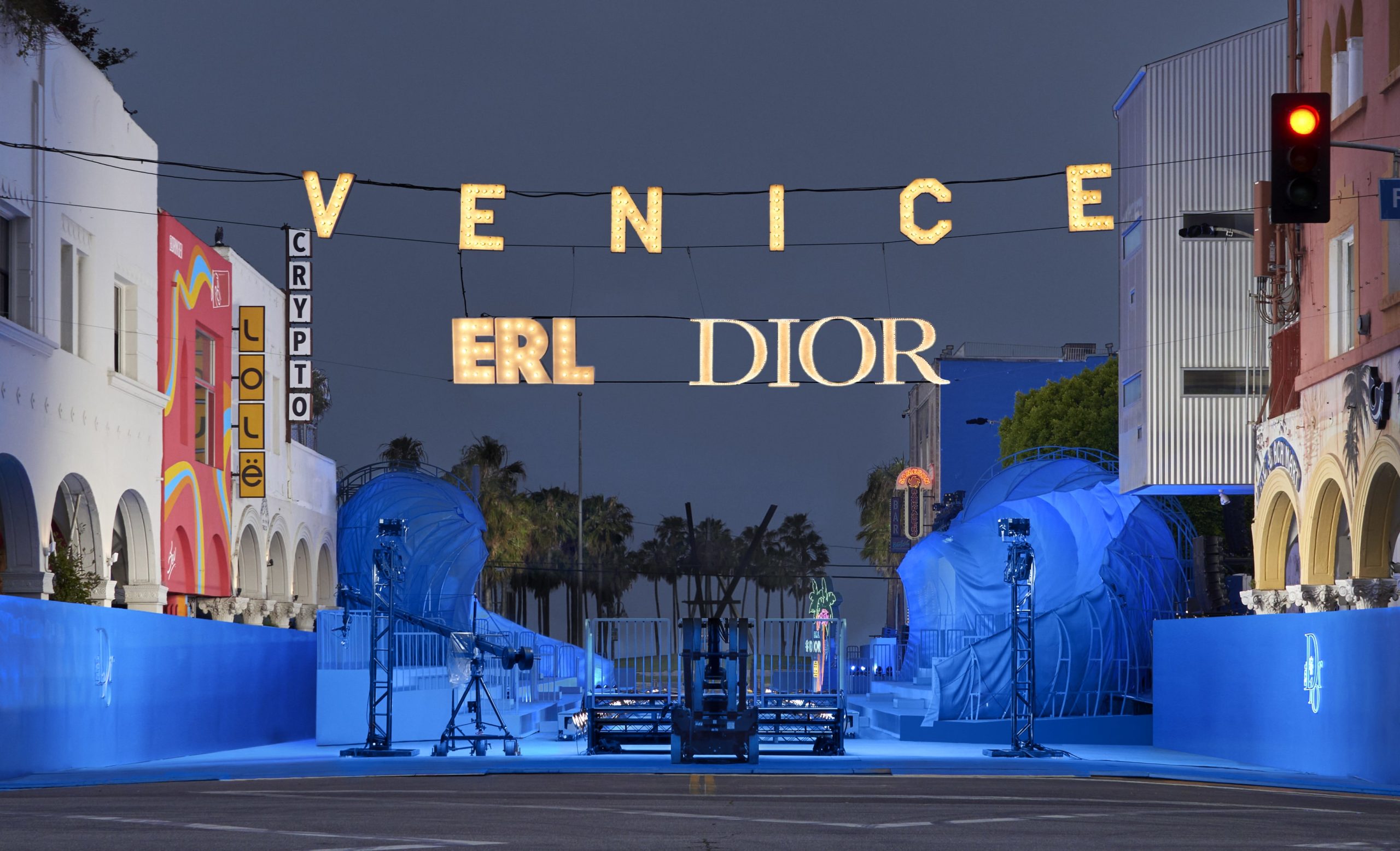 Dior Men Spring 2023, photo © Eric Staudenmaier, courtesy of Dior.
Dior Men Spring 2023, photo © Eric Staudenmaier, courtesy of Dior.
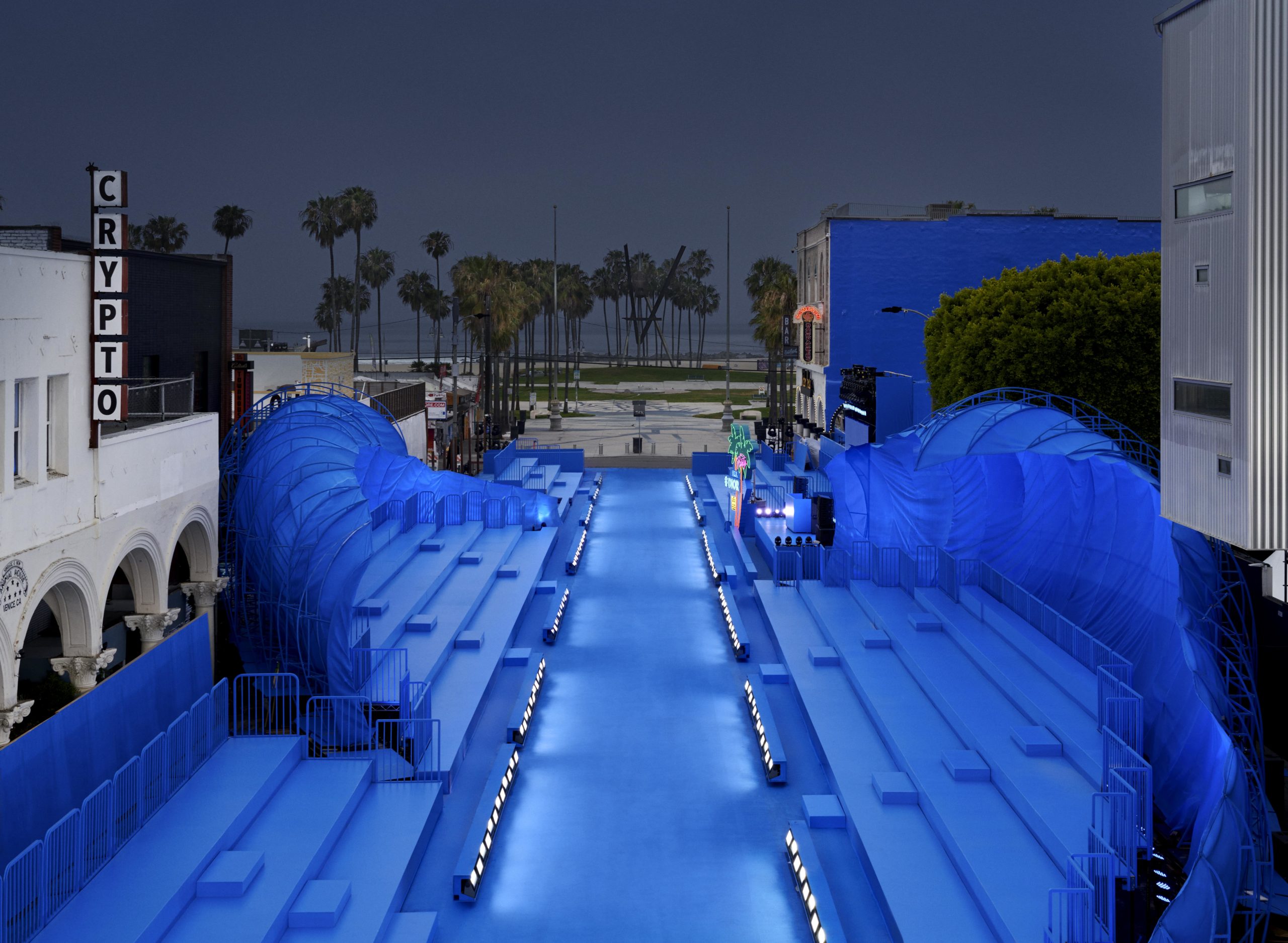 Dior Men Spring 2023, photo © Eric Staudenmaier, courtesy of Dior.
Dior Men Spring 2023, photo © Eric Staudenmaier, courtesy of Dior.
The exchange between Jones and Linnetz—taking notes from long-established high fashion and a slightly more carefree, contemporary streetwear—resulted in looks that were texturally lush and structurally nonchalant, emitting an appealing balance of cool and collected. Tailoring was remixed with loose or swinging shapes, elements that might be considered feminine were styled with a certain suave, and archetypal silhouettes depended on tactile fabrications (like fuzzy mohair, sparkling tinsel knits, and puffy quilted motifs) to carry them into the present. These elements, when combined, yielded looks like a suite of silk suiting, blazers paired with feathered shorts, and open cardigans worn with pieces like quilted joggers or silken trousers.
Accessories were also a memorable element, with several tell-tale styles alluding to Linnetz’s year of birth and beachside upbringing—like knitted beanies, diamond-studded choker necklaces, caps with mesh birdcage veils, fanny packs in colorful tinsel, and the rainbow array of wide-mouthed skater’s sneakers that accompanied each look. Ensembles we’re still thinking about include a mock-neck shirt reminiscent of a wet suit and emblazoned with a playful placement of “Dior,” which was paired with hot pink pants and matching shoes; a checkerboard sweater and newspaper-printed shorts featuring details like striped socks and red-tinted shades; and a pair of acid wash jeans styled with a sheer button-up shirt, worn open and paired with a tiny cross-body pouch and thick gold chain jewelry.
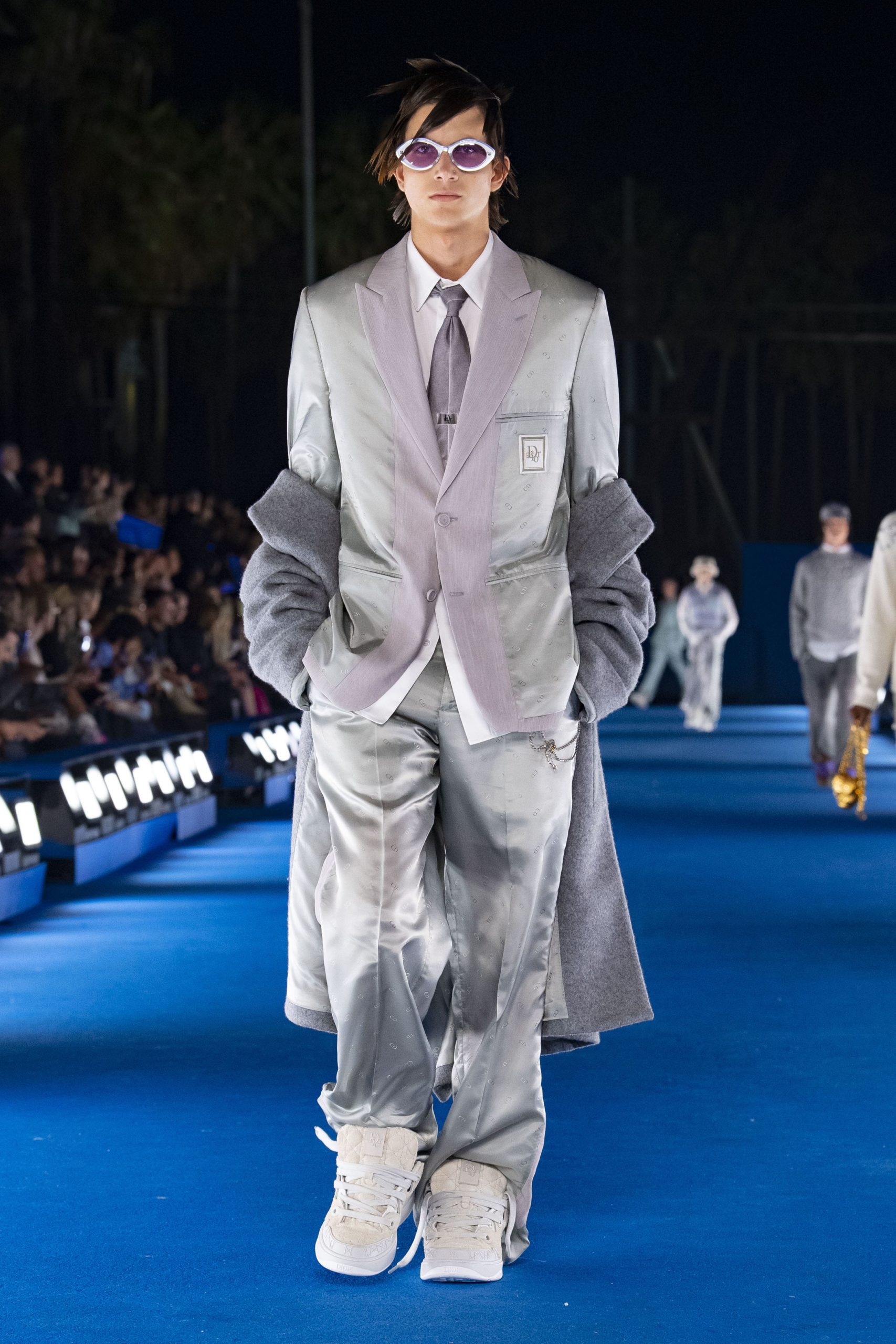 Courtesy of Dior.
Courtesy of Dior.
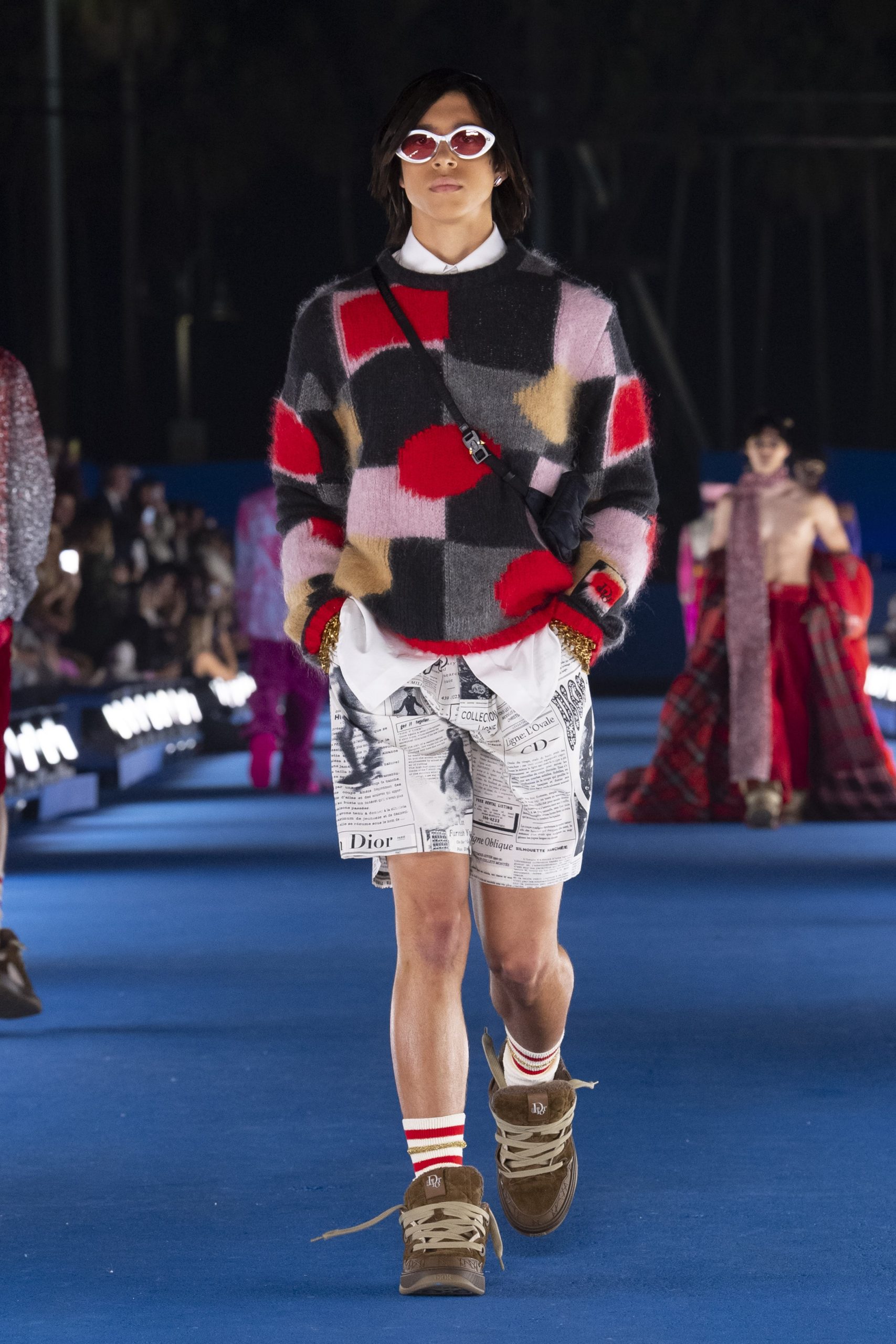 Courtesy of Dior.
Courtesy of Dior.
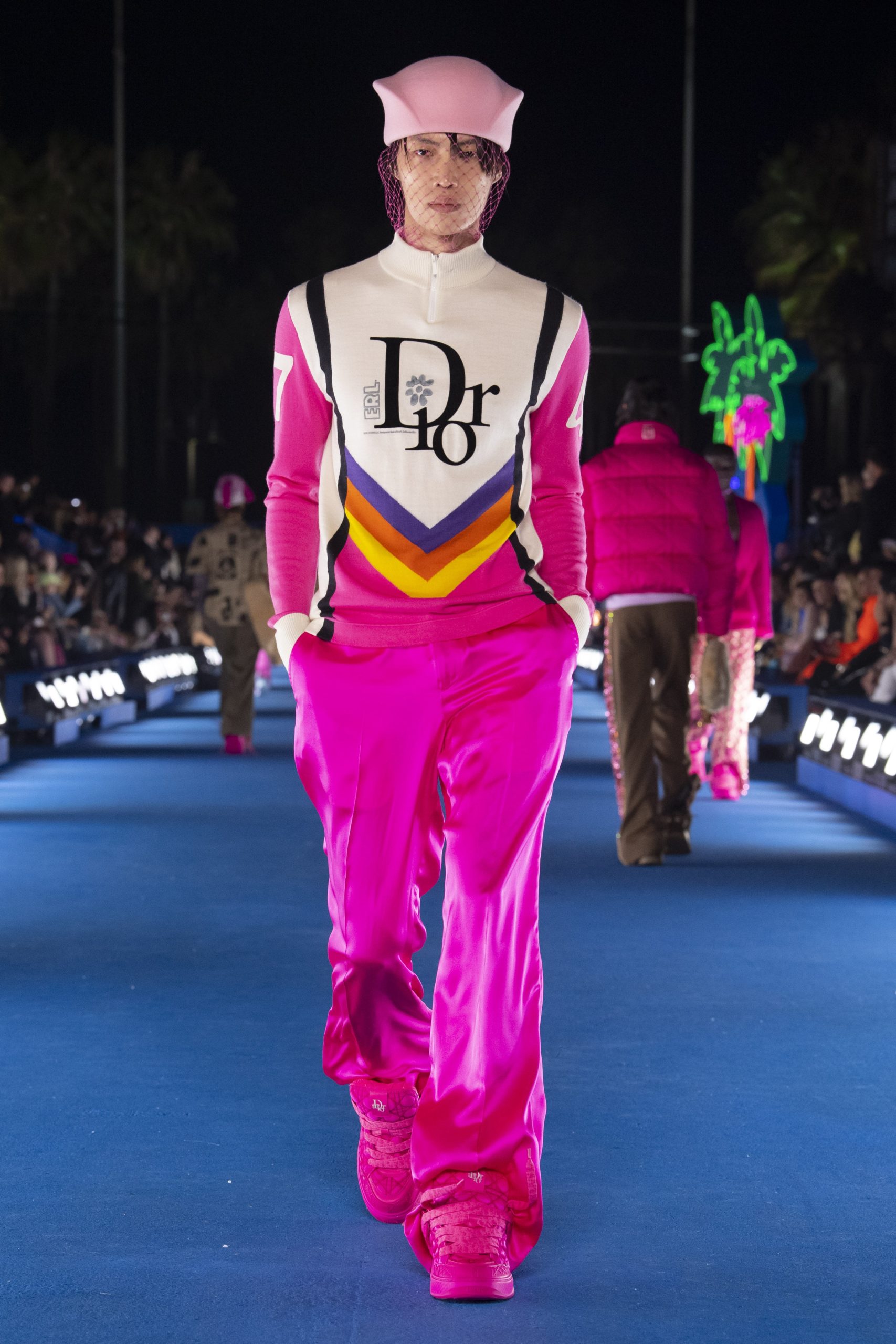 Courtesy of Dior.
Courtesy of Dior.
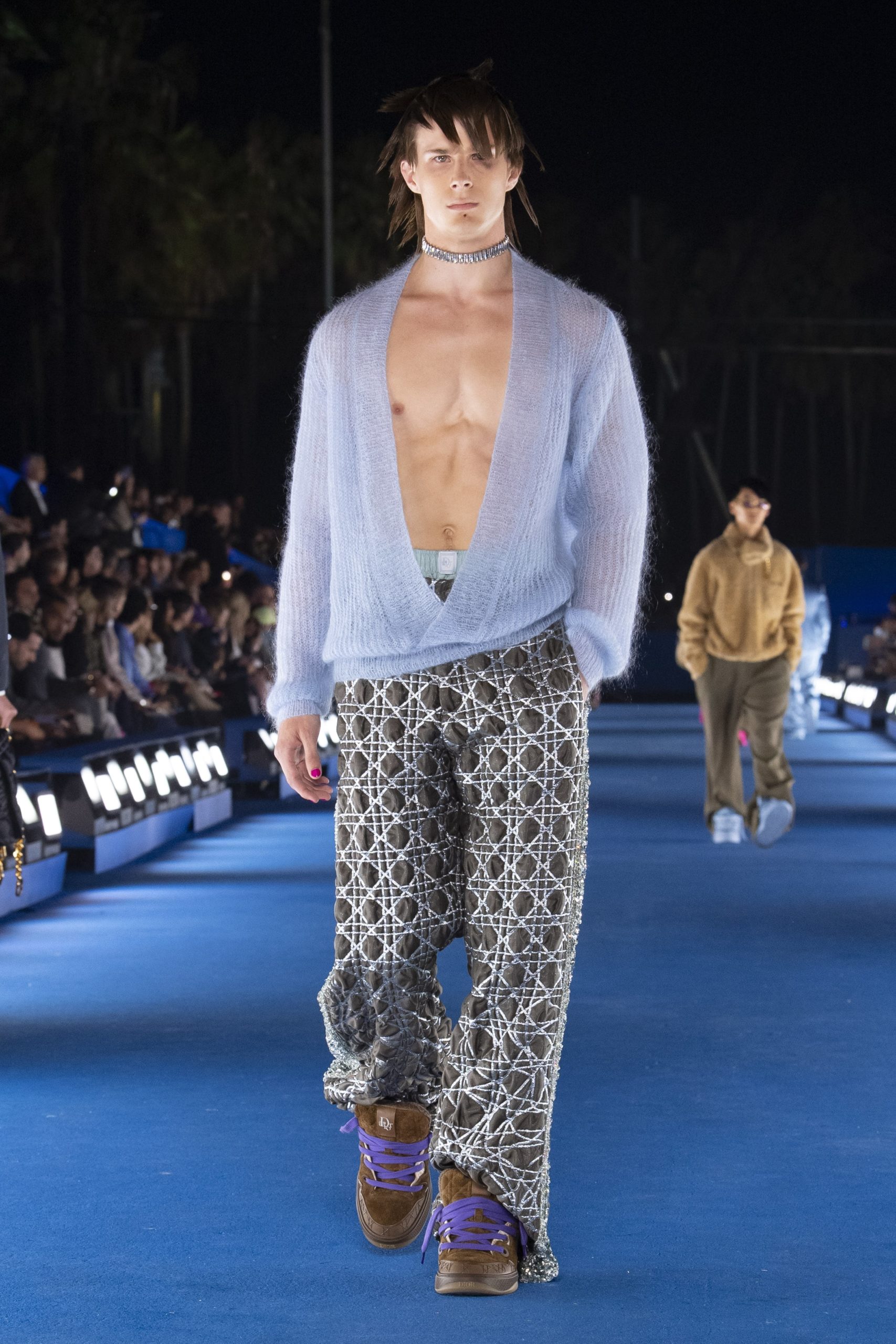 Courtesy of Dior.
Courtesy of Dior.






